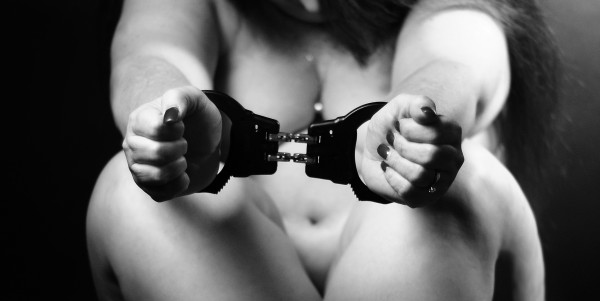Students offer their perspectives on the depiction of BDSM and relationships in the series
When it was decided that 50 Shades of Grey would be made into a movie, there was a lot of hype and
excitement. But since its release on Feb. 14, it has been given mixed reviews and negative criticism.
From disappointed fans to unhappy feminist groups, George Brown College (GBC) students weighed in on what they believe is wrong about this series.
Elizabeth Orbe Donoso, child and youth worker student, is concerned about the book’s origins as Twilight fan fiction. “If anyone’s read the twilight books, both of the guys or main characters are pretty abusive, and these relationships are ones that you want to stay away from,” she says.
Described as a rich man in the book, Christian Grey comes from a troubled past and a childhood full of turmoil and unfair treatment. Some feel that the book has portrayed troubled childhoods as an excuse to become sexually violent in adulthood.
“It’s not true that people who are abused as children turn out that way, not everyone who is abused turns out like Christian Grey,” said Orbe Donoso.
The series is famous for its portrayal of BDSM sexual activities. Sarah Rayner, LGBTQ support staff at the Community Action Centre, explains the meaning of the acronym as being: B&D for bondage and discipline, D&S for domination and submission, and S&M for sadism and masochism. It is used in both the book and movie and according to Rayner it misinforms audiences who may not be familiar with the term.
When talking about the relationship between Grey and Anastasia Steele, Rayner says that, “based on what I do know, the relationship between Christian and Anastasia is abusive and isn’t a proper sub (submissive) and dominant dynamic.”
The sub and dominant dynamic as illustrated by Rayner is meant to be a relationship in which both people are consenting and aware of what is going to be taking place. “A dom/sub relationship requires communication and trust,” she says. Orbe Donoso adds that, “the sub is usually in control because they are the ones to use the safe words,” having the power to stop any activities.
However, in the movie the dominant is portrayed as ‘in control.’ According to Rayner, there is one point where Steele says stop and Grey refuses.
Shay Sanders, the Student Association’s LGBTQ representative, weighed in, saying, “the use of a safe word in BDSM is great, but the dominant still has a responsibility to pay attention to the submissive partner’s reactions.”
Without safe words or consent, it is no longer considered BDSM.
“If there is no consent, it’s rape,” said Rayner, adding that, “there’s nothing wrong with both the book and movie being a guilty pleasure for people, but the issue is that for many people this is their first glimpse at BDSM and they accept every flaw as reality. BDSM is being framed as abuse, and abuse is being framed as love.”
While many like Sanders believe the book was poorly written, “with overused phrases and a female lead that repeatedly ignores her own feelings in order to meet Christian’s demands.”
“The book relies on the inexperience of Ana in order to further the story,” said Sanders, and to anyone who understands the dynamic of an abusive relationship would find Grey’s behaviour, disturbing.
Fearing that this story will end up as a romantic ideal, Sanders also notes that women may ignore real red flags like the ones depicted and romanticized in the book.


